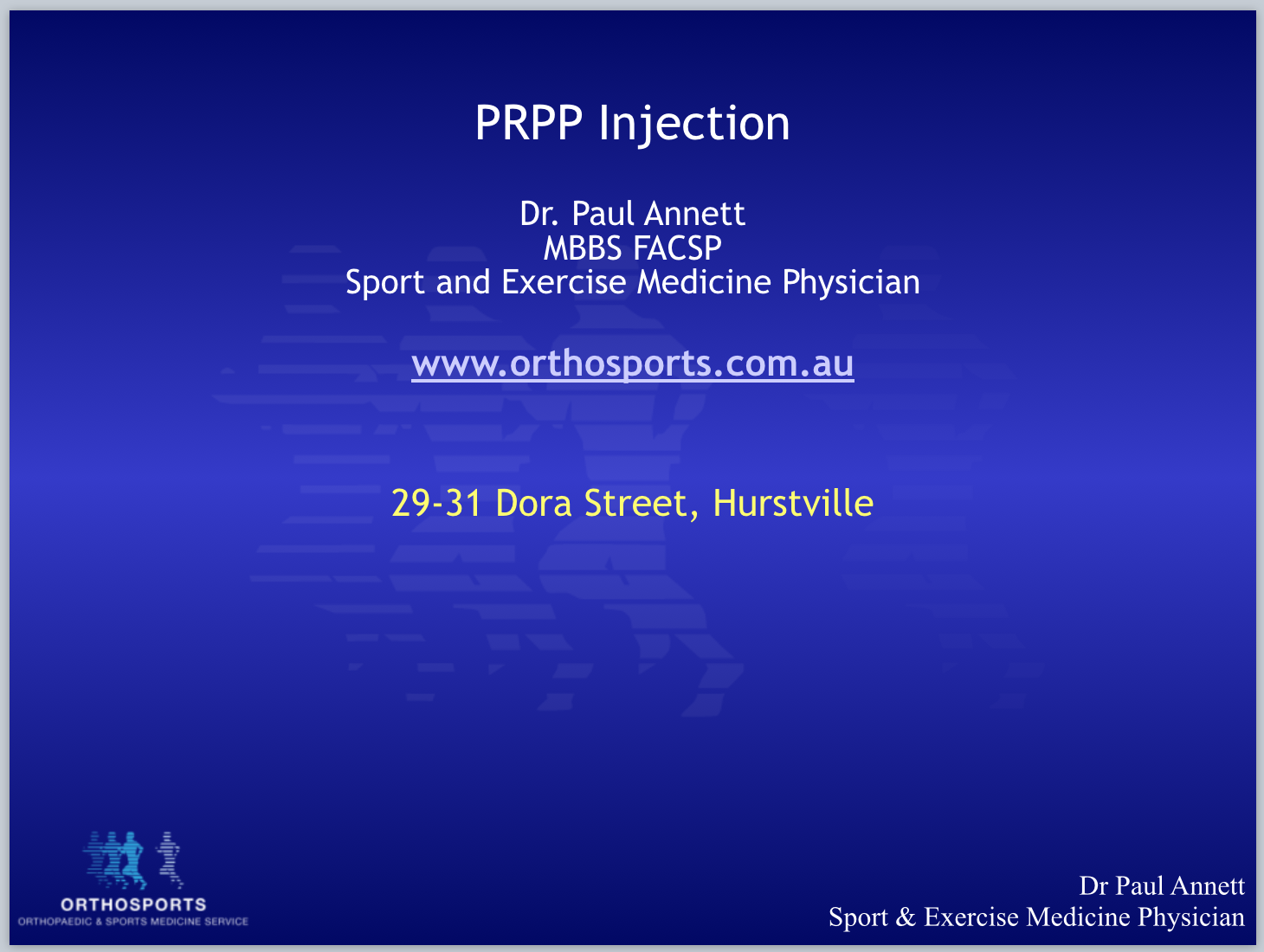Plasma rich platelet protein (PRPP) injections are becoming a more widely accepted treatment alternative for managing chronic tendinopathy and also degenerative joint disease.
What is PRPP?
PRPP is defined as a solution that has a concentration of platelets above the baseline of whole blood (150-400 X10 9/litre). Platelets are the cells of healing and repair. They contain over 1100 proteins contained in the alpha granules that are involved in various aspects of tissue repair.
PRPP solutions aim to harness this ‘healing potential’ of blood to stimulate a regenerative process in tendons and potentially articular cartilage.
The pathogenesis of tendon problems is not universally understood. It involves overload in a degenerative structure followed by an aberrant microvascular response known as angiofibroblastic hyperplasia.
Tendon conditions are well described to heal slowly, often taking 12-18 months to improve. This may be attributable to poor blood supply failing to stimulate the process of tissue repair. These prolonged time frames are not always acceptable to an athlete or manual worker.
Standard treatment of tendinopathy usually involves relative rest, anti-inflammatory measures, physiotherapy with a rehabilitation program and consideration of a local cortisone injection. Whilst this approach is successful in many patients, a small proportion do not improve and require further treatment. Historically this has involved surgery, which is not universally helpful.
Biologic therapies have been available in other fields of medicine for a number of years, and have stimulated a lot of interest in in filling the gap between standard conservative and surgical treatment. Initial methods involved the injection of whole blood around tendons with a view to stimulating a healing response. In one study 22/26 patients with tennis elbow improved after a single autologous blood injection.
The logical next step involved concentrating the active component of the blood, the platelets, whilst removing the parts that were not directly useful for healing, mainly the red blood cells and excess plasma. Injection of this ‘platelet rich plasma’ or PRP, should theoretically enhance tissue healing in chronic tendon conditions.
There are different methods of preparing PRP, leading to variable platelet counts. Some authors attribute this as a reason for lack of scientific evidence of PRP efficacy. Ideally platelet concentrations should be greater than 4 times baseline. This is most reliably achieved using a commercial kit for preparation. An anti-coaggulant such as citrate-dextrose should be added to the whole blood to prevent activation of the platelets and subsequent clotting until they are delivered into the required area.
Where possible the PRP should be delivered to the affected area with imaging guidance, such as ultrasound, to maximize the accuracy of delivery.
Side Effects
On the whole, PRP injection is a safe procedure. The use of the patients own blood does make this a true ‘natural therapy’. The main side-effect is with local pain around the injection site. The severity and duration is variable, but generally lasts for a few days (coinciding with a period of acute inflammation) and will often require stronger pain killers. Some patients do develop pain for a few weeks. Ice is initially helpful. Pain is generally worse in tight tissue spaces such as the common extensor origin. Other side-effects could include local infection, which is uncommon
The PRP injection usually takes 2-3 weeks to take effect, but it will often take a good 6 weeks before pain will improve. There is a role for repeating the injection at around the 6-8 week mark if initial improvement has occurred. Uncommonly a third injection can be required
Efficacy
PRP injections are not universally beneficial. The success rate for various tendon conditions in papers of variable quality is around the 70% mark. One higher quality randomized double blind study looking at PRPP injection versus cortisone injection for chronic tennis elbow found a 75% improvement rate in the PRPP group at 12 months compared to a 49% improvement in the cortisone group.
A recent study looking at PRPP injection versus normal saline injection for osteoarthritis of the knee showed a significant improvement in pain in the PRP group with a deterioration of symptoms in the saline group at 6 months.
Key Points
- PRPP is an adjunct to the treatment of tendinopathy and degenerative joint disease
- PRPP fills a space in management between standard conservative care and surgery
- The basic science of PRPP injection would support enhanced healing in soft tissues
- Over a diverse group of tendinopathies, PRPP has a success rate of around 70%
- The main side-effect of PRPP injection is post injection pain
Please click on the slide to view a power-point presentation on PRPP injection.

